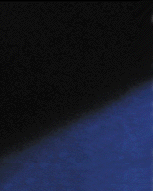|
|
|
 |
|
Buddha's Birthday |
| This day celebrates both the birth of Buddha, who was born in India 2,600 years ago, and his teachings which are full of... |
| | |
| |
| Painting the Heart of Buddha |
| Buddhist art has flourished in Korea for over 1600 years. Today, young artists, such as Lee Cheol-Seung, continue to fi... |
| | |
|
|
|
Korean Buddhism¡¯s long history
Korean culture is closely related to Buddhism. Buddhism was established here in ancient times. Buddhism has existed in the world for more than 1,500 years. In the Koryeo period (935-1392) Buddhism became the national religion. Thus various customs were developed and today they still exists within Korean culture.
The date of April 8 by the lunar calendar is a Korean national holiday. There are many Buddhist events on the street and in the temples in Korea as well as in the world. People turn on lights shaped like lotus flowers, and march down the street. The procession looks like a stream of lotus lamps. At the exhibition of traditional lotus lamp various Korean traditional lamps relate to Buddhism. To admire the Buddha¡¯s coming to the world and be lightened in the Buddhist¡¯s mind, the Buddhist ceremony begins by ringing of bells in the whole country at 10 A.M. on Buddha¡¯s birthday.
The representative Buddhist dance is called ¡®Seungmu¡¯. It is an essential Korean traditional dance. It is an intellectual dance expressing the high level of joy and sorrow in human life. The dance prays for the hope of human life, expressing human compassion and romance.
One Buddhist dance called ¡®Beomu¡¯ is performed in Buddhist ceremonies. ¡®Beomu¡¯ is divided into ¡®Nabichum¡¯ (Butterfly dance), ¡®Beobgochum¡¯, ¡®Barachum¡¯, ¡®Tajuchum¡¯. Each dance symbolizes Buddhist ideology. It expresses by dance, a promise to protecting the Buddhist thought, and to go through life in the way the law of Buddha indicates. It also expresses the joy of understanding the law of Buddha.
Buddhist art has a long history, changing in each historical period. Many artistic pieces related to Buddhism remain. According to the type of fabrication, the Buddhist pictures are classified into wall paintings or alta portraits of Buddha called ¡®Taengwha¡¯. Wall paintings are pictures using the teachings of Buddha. ¡®Taengwha¡¯ means pictures painted on paper, silk or cotton cloth.
Korean Buddhism has certain characters that are different to the Buddhism of India or East Asian countries. Korean Buddhism therefore has originality. We strongly recommend visiting a temple when you visit Korea. There you will see a refinement and solemnity in Buddhist art.
|
|



